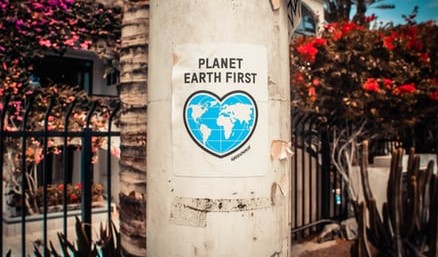
By Nancy Jenkins
Sustainability, going Green, carbon impacts, and net zero are terms sprinkled liberally throughout media reports from the mainstream to the niche. But does this reporting reflect corporate marketing strategy or suggest evidence of actual changes in the ways organizations conduct business?
ARTA has dedicated its 2020 Green Education Conference to the issue of sustainability. As we begin the next decade, it’s an ideal time to begin a conversation within the textile services industry about what we are doing right, what we can improve upon, and where we should focus.
Does Sustainability Matter?
The public’s awareness of sustainability issues has grown, as evidenced by the Collins Dictionary 2018 Word of Year — single-use.
According to Collins there’s been a four-fold increase in the use of the word since 2013, due to news coverage of environmental issues. Single-use “encompasses a global movement to kick our addiction to disposable products. From plastic bags, bottles, and straws to disposable diapers, we have become more conscious of how our habits and behaviors can impact the environment,” Collins says.
To date, more than 112 countries and cities around the world have agreed to curb the sale of certain single-use plastic items — and that number is only expected to grow. New York state lawmakers have approved a state-wide plastic bag ban that goes into effect March 2020. Similar bans are already in effect in California and Hawaii. Some countries are placing taxes on plastic bags in lieu of a ban.
Major fashion brands such as Gucci, Stella McCartney, Nike, Eileen Fisher, Patagonia, and Everlane have committed to pursue sustainable methods for textile sourcing and production, and adopted measures to promote textile recycling, closing the loop on the millions of pounds of discarded textiles that wind up in landfills.
A Two-Pronged Challenge
Where does the textile services industry fit within these global trends? The challenge is two pronged: 1) Our core products and services offer a sustainable option for clients, and yet we often have trouble convincing them to buy reusable products over single-use items. 2) Like any industry, there is opportunity to improve the sustainability quotient in how products, equipment, and supplies are sourced and manufactured.
Textile Services: Sustainable, But Underappreciated
Our industry offers sustainable products that are recycled at their end of life. In the 10 years since the American Reusable Textile Association (ARTA) held its Green Summit in Quebec City, ARTA has completed and published life cycle assessments (LCAs) on three products — surgical gowns*, isolation gowns, and cleanroom coveralls — with a fourth in the works on incontinence pads. This work provides scientific evidence that reusable textile items are THE more sustainable product choice over single-use disposable products.
In addition, the ARTA Board of Directors has approved the development of reports that specifically quantify the economic and environmental benefits of surgical and isolation gowns, cleanroom coveralls and, when the
LCA is completed, of incontinence pads as well. These reports will allow companies to more tangibly illustrate the benefits of reusable products to their customers.
And yet, while environmentally conscious consumers may be willing to pay for fashion produced in a more sustainable manner, in the B2B economy the lowest price typically wins the sale (given that any company in the textile services industry must provide quality products and services to compete). Very often, manufacturers of single-use disposable products win the sale through aggressive marketing, product rebates, and creative contracts.
But there is progress. Practice Greenhealth has 900 member hospitals committed to operating as sustainably as possible. And ARTA members have begun to leverage LCA data and educate clients on the environmental advantage resuable textiles offer.
Room for Improvement: Rethinking Supply Chain and Manufacturing Processes
As with all business in the West, any operational change must balance needs and wants with the ability to stay in business — make a profit.
The textile industry is one of the most polluting in the world, second only to oil. Its sustainability challenge involves multiple, interrelated, and complicated issues — from the water and chemicals used in making textiles to the labor issues posed by the 250 million-plus people who work in textile manufacturing worldwide.
So, how do we Green an established supply chain and manufacturing process that largely resides overseas?
There are no quick and easy answers. But there are universal truths: people and organizations change behaviors when they are forced to do so, either for financial or legal reasons or for fear of demise.
It’s possible to envision a time (10 or 30 years from now), when a reusable product is the preferred purchase because:
· Landfill costs are too expensive or no landfills are accepting waste.
· Single-use products are largely banned or carry a significant tax.
· Purchases of reusable products are eligible for tax exemptions.
The challenge at hand is to begin the conversation, build on the strengths of our reusable products, continue research that proves our case, market more effectively, and improve the sustainability of our operations as we are able.
Join the conversation during ARTA’s Green Education Conference at The Gaylord Palms Resort in Kissimmee, Feb. 26-28.
About the Editor: Nancy Jenkins is the editor for Reusable Textiles and executive director for ARTA. She is the owner of Jenkins Integrated Marketing (JIM) and resides in the Kansas City Metro with her husband, parents, and two dogs.
____________________________________________________________________________
*The ARTA-IAHTM LCA on Surgical Gowns has been accepted for publication by the AORN Journal, publication date TBD.













